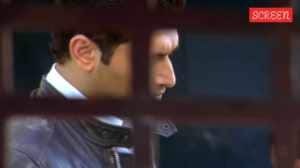Script for Our Times
A look at a few journals that attempt to bridge the Hindi-Urdu divide.
A look at a few journals that attempt to bridge the Hindi-Urdu divide.
The India-Pakistan Partition resulted in numerous causalities,one of them was also language. Pakistan adopted Urdu as its national language,India favoured Hindi,and commonalities that the two shared,now belonged to none. In the 1930s,for example,purists of both sides pooh-poohed Hindustani. In the fierce battle of the languages that ensued,the script Devanagri,in which Hindi is written,and Nastaliq,in which Urdu is written,became weapons of mass debate.
Urdu (the script) slowly faded away from north India,due to a nasty mix of politics and prejudice. But over the years,an easy mix of Hindi and Urdu came to dominate the street,bazaar,cinema and popular music. Today,there is a whole generation of Urdu-enthusiasts,comprising of mostly those who have not learnt to read and write the script.
Rajan Prasad,of the Left cultural organisation SAHMAT,says doyens,like Urdu poet Ali Sardar Jafri,Laid down the rules of how Urdu needed to be transcribed in Devanagri,and how sounds that are not there in Hindi need to be written,in 1958. Many classical Urdu texts,novels and poems were converted into Hindi. But the gap between the two purist establishments,Hindi and Urdu,grew with time and transcriptions of major Urdu literary works into Devanagri was seen as near-treason against the Urdu cause. The Hindi establishment,meanwhile was keen to do away with things that made Urdu distinctive,like removing the nuqta in the script that differentiates,ghazal from gazal or even khaas or khabar,written as if pronounced simply and not from the epiglottis.
But a few journals,magazines and even a tabloid are trying to maintain contact between Hindi and Urdu,and continue to bring contemporary literature and debates of Hindi and Urdu to a young readership unfamiliar with the Urdu script. Slowly,quietly,but pragmatically,using Devanagri,complete with the nuqta,to draw an authentic link between Hindi and Urdu,each of these publications has tried for its own reasons to retain the fragrance of the original. All so that the Hindi and Urdu worlds continue to find points of convergence and remain aware about what is happening in each others spheres without,necessarily,taking recourse to English translations.
SUKHANWAR
A bi-monthly from Bhopal
Anwar ul Islam,editor of this Bhopal-based journal,started in 2008,is annoyed at being singled out for attention for publishing Urdu literature in Devanagri. Conscious of the context of it he says,We arent serving the cause of Urdu. We are just helping those who are victims of this policy to not teach Urdu in schools,despite the three language formula. We help readers keep up with new literary trends,which tell a different story from what someone may read in Hindi alone.
Islam is pained that Bombay has made only five Urdu films and its mistreatment of Urdu. The fact that Mughal-e-Azam is called a Hindi film,remains a hot button issue with him,even after all these years.
He is also a Sahitya Akademi awardee,a well-known poet who has used his fame to leverage support for his magazine. He proudly tells you that they also translate Kannada and Telugu articles,occasionally in the magazine.
With 600 subscribers,Islam does not hesitate to use the Web to draw in readers. With a rapid increase in Hindi-literate Web users,it makes sense to expose them to more than just employment updates or news,he believes. Literature can be kept alive through the Web,after all. Islam is cognisant of the possibilities the Web offers him and is sure that things will improve.
JADEED MARKAZ
A weekly originally from Lucknow
This weekly Urdu and Devanagri tabloid is now also published from Mumbai and Delhi. It is perhaps to be expected that it originated from Lucknow,the heart of the Hindi vs Urdu battle. When its editor,Urdu journalist Hisam Siddiqui was reporting in the volatile 80s,his friends and he noticed the huge divergence between how the Hindi and the Urdu press were reporting politics and other news stories. It was almost as if there were two worlds. So Kuldeep Nayyar,Ashok Priyadarshi and Mulayam Singh Yadav,a journalist,bureaucrat and the chief minister respectively,all suggested that we need a paper that reduces the gap, says Siddiqui. It was a part of a political project that Jadeed Markaz took root,and in January 1991,the papers first issue was inaugurated.
On finances,Siddiqui says,Like-minded governments give us advertisements easily,those who dont believe in the need for such a paper,dont. I started the paper with a loan from the printing press which was publishing the paper and paid it back slowly. Because of the papers overt politics and the determination to publish the same syllable in Devanagri and in Urdu,both the Hindu and Muslim fundamentalists disliked us, says Siddiqui.
He says a noted Muslim cleric complained that I wanted to finish the Urdu script. But I was clear that I was not responsible for the marginalisation of Urdu,I was only responding to it and meeting the demand of those young people who spoke and thought in Urdu but wrote in Devanagri.
With a circulation of 52,000, says Siddiqui,it is clear Devanagri sells more. They have a spiffy website,where both the Urdu and Hindi papers open up. Siddiqui says the website is free,to attract more traffic.
We are not counted in either category,hamari gintee kisi mein nahin hoti, he says,but that has its advantages. I know a lot of people who have learnt Urdu through Markaz,especially aspiring actors and writers for the Hindi film industry.
SHESH (The remains)
A quarterly from Jodhpur
Pocketbook-sized,this do zubaano ki ek kitaab is rich source material in Urdu and Hindi,with original,or reprinted, interviews that debate the state of the language. It also covers poetry and publishes articles from Pakistan,making these articles available to a Hindi-reading but Urdu-speaking population.
Hasan Jamal (71),a retired court officer,who invested his post office savings in the magazine,says,The idea was mooted in the early 80s by three journalist friends. We could initially bring out only three editions,and the third took a long time coming. Jamal did most of the editing and despite promises of funding from a renowned writer from the Bombay film world,the money never came, forcing him to use his savings.
Jamal brought out this home journal with his wifes support. Her death in 2010 left him broken. With his four girls married and away,being alone has given him a unique sense of motivation and he uses the solitude to further his responsibility to a language which has been killed because of a conspiracy of small minds,who never understood its potential and the fact that it was a true Indian language that developed here.
Jamal was very influenced by an Allahabad magazine,Urdu Sahitya,now discontinued,which rendered Urdu and Hindi contemporary fiction into Devanagri,and Urdu doyen Shamsur Rahman Faruqis digest,Shabkhoon.
Conclusion
The script,is a matter of debate,but Ravikant based at the Centre for the Study of Developing Societies and an editor of Pratimaan a recently-launched Hindi literary journal says,The Hindi purists who even banned Hindi film songs for a while on AIR or promoted a very Sanskritised Hindi via state TV and the Urdu purists who tried to Arabise the language both lost out. Look at the language which has now survived. It is Hindustani,a mix of both,which is not bound by extremes of the Hindi or Urdu establishment. That is the real winner and has shaped the Indian imagination.







- 01
- 02
- 03
- 04
- 05
























